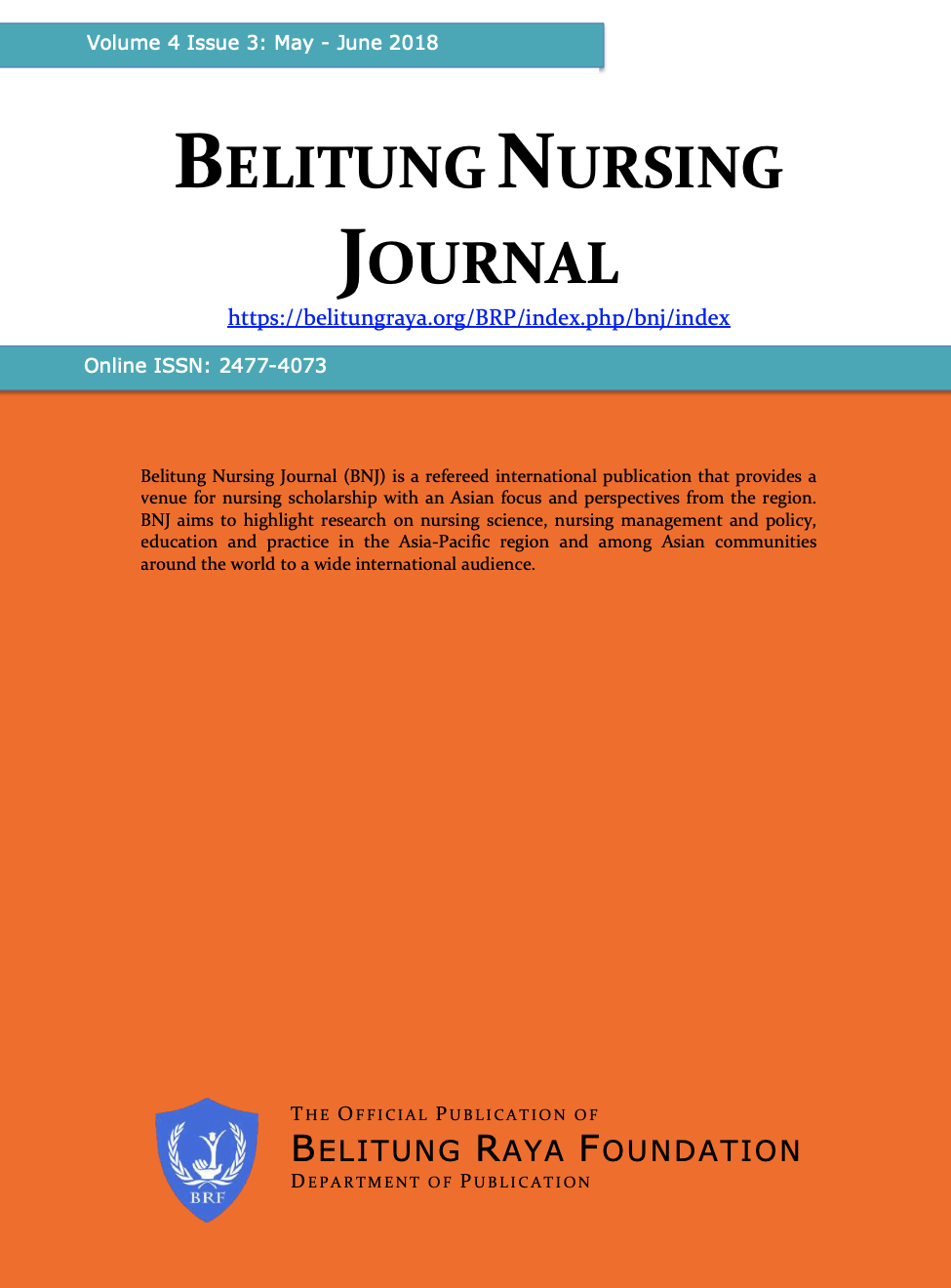Hadisiwi, P. S., J. R. . (2016). Literasi kesehatan masyarakat dalam menopang pembangunan kesehatan di Indonesia [Public health literacy in sustaining health development in Indonesia]. Paper presented at the Seminar Nasional Komunikasi Universitas Padjajaran, Bandung, Indonesia.
Harun, H., Ibrahim, K., & Rafiyah, I. (2016). Hubungan pengetahuan terhadap kepatuhan menjalankan pola hidup sehat pada pasien pasca intervensi koroner perkutan di Rsup Dr. Hasan Sadikin Bandung [Relationship of knowledge and compliance in doing healthty lifestyle in patients post percutaneous coroner intervention at Rsup Dr. Hasan Sadikin Bandung]. MEDISAINS, 14(1).
Indrawati, L. (2014). Hubungan antara pengetahuan, sikap, persepsi, motivasi, dukungan keluarga dan sumber informasi pasien penyakit jantung koroner dengan tindakan pencegahan sekunder faktor risiko (studi kasus di RSPAD Gatot Soebroto Jakarta) [The relationship between knowledge, attitudes, perception, motivation, family support, and information sources of coronary heart disease patients with secondary risk factors. (case study at SPAD Gatot Soebroto Jakarta)] Jurnal Ilmiah Widya, 1(1).
Latimer, A. E., Katulak, N. A., Mowad, L., & Salovey, P. (2005). Motivating cancer prevention and early detection behaviors using psychologically tailored messages. Journal of Health Communication, 10(S1), 137-155.
Leventhal, H., Diefenbach, M., & Leventhal, E. A. (1992). Illness cognition : Using common sense to understand treatment adherence and affect cognition interactions. Cognitive Therapy and Research, 16(2), 143-163.
Miller, T., & DiMatteo, M. (2016). Health beliefs and patient adherence to treatment. In H.S. Friedman (Ed.), Encyclopedia of Mental Health (Second Edition) (pp. 298-300). Oxford: Academic Press.
Mirka, T. (1994). Meeting the learning needs of post-myocardial infarction patients. Nurse Education Today, 14(6), 448-456.
MOH. (2014). Situasi kesehatan jantung [Heart health situation]. Jakarta: Ministry of Health of Indonesia
Monahan, F. D., Sands, J. K., Neighbors, M., Green-nigro, C. J., & Marek, J. F. (2006). Phipps' Medical-Surgical Nursing: Health and Illness Perspectives. Philadelphia: Elsevier Health Science.
Nuraeni, A., Mirwanti, R., & Anna, A. (2018). Relationship of spiritual-wellbeing with anxiety and depression in patients with cardiac heart disease. Belitung Nursing Journal, 4(1), 45-50.
Nuraeni, A., Mirwanti, R., Anna, A., & Prawesti, A. (2016). Faktor yang memengaruhi kualitas hidup pasien dengan penyakit jantung koroner [Factors influencing quality of life of patients with coroner heart disease]. Jurnal Keperawatan Padjadjaran, 4(2), 107-116.
Peterson, J. C., Link, A. R., Jobe, J. B., Winston, G. J., Klimasiewfski, E. M., & Allegrante, J. P. (2014). Developing self-management education in coronary artery disease. Heart & Lung: The Journal of Acute and Critical Care, 43(2), 133-139.
Rimer, B. K., & Kreuter, M. W. (2006). Advancing tailored health communication: A persuasion and message effects perspective. Journal of Communication, 56(s1).
Scott, J. T., & Thompson, D. R. (2003). Assessing the information needs of post-myocardial infarction patients: A systematic review. Patient Education and Counseling, 50(2), 167-177.
Timmins, F., & Kaliszer, M. (2003). Information needs of myocardial infarction patients. European Journal of Cardiovascular Nursing, 2(1), 57-65.
Uysal, H., & Enç, N. (2012). A Turkish version of the cardiac patients’ learning needs inventory; Patient questionnaire (TR-CPLNI): Reliability-validity assessment. International Journal of Caring Sciences, 5(3), 264-279.









